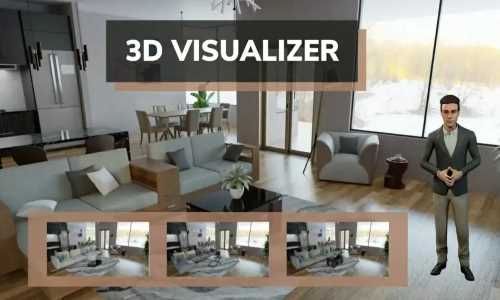Can 3D Visual Assist Doctors? How?
 By
By
3D Visual is a new
medical imaging technique that is gaining popularity in the medical community.
This method uses ultrasound and CT scans to create three-dimensional images of
the heart, lungs and other organs. Many doctors believe this kind of technology
can be better than MRI or CAT scans for certain diseases because it provides
more precise information about what's happening inside your body.
3D
visualization is a technology that
allows doctors to see their patient's organs in 3D. Doctors can use this
technology to see the heart, brain, lungs and other organs. It also allows them
to see the patient's face and body in 3D.
To understand how 3D
Visual works, think about what happens when you look at yourself in a mirror:
your reflection doesn't move when you move around; it stays in one place even
though you aren't standing still. That's because mirrors reflect light rays
equally from all directions at once so that they arrive at your eyes from
different angles (this is called 'specular reflection'). This means that trying
on clothes while looking into a mirror feels like other people are seeing
exactly what you're seeing – but actually, only one side of their faces is
visible - because they're behind another mirror! According to Adobe 3D AR
experts, "3D rendering software takes all the data associated with the 3D
model and renders it into a 2D image."
3D Visual does something
similar using infrared technology instead of mirrors: it uses infrared cameras
which detect heat coming off objects (including human bodies) rather than
reflected light rays like regular cameras do. So you don't need any special
reflective surfaces as mirrors do for humans!
3D visual assist can be
used to show the doctor the patient's anatomy and what is happening inside your
body. This allows a greater understanding of your condition and creates a more
efficient diagnosis process.
3D Visual also allows
for easier communication between doctors and patients since they can now see
exactly what is happening inside their bodies in real-time. For example, they
can be used to help doctors identify tumors or abnormalities in organs that may
not be visible from outside X-rays or MRIs - helping them better understand
what's going on with each patient so they can provide better care!
3D visuals can be used
to see the internal organs. MRI can not do so. For example, if you want to find
out what kind of disease a patient has, then you will use 3D visualization. The
patient does not need to take off their clothes or wear any special clothes
when using 3D visual technology because it is non-invasive and will not harm
them.
3D medical imaging is
better than MRI because it can show more details and is also safer for patients
who are sick or have diseases but cannot go through an operation. Therefore,
experts think this technology should be used by all doctors instead of MRIs
because they have many benefits over MRIs, such as being less expensive and
less time-consuming and having fewer risks.
3D visual assist has the
potential to be more precise than MRI. It doesn't use radiation, and it
requires no sedation. However, MRI is more widely used than 3D visual assist
because it is still a relatively new technology and requires skilled surgeons
familiar with how to use this tool.
What
is 3D Visual?
How
can 3D visualization assist the doctor?
Can
it be more precise than MRI?






